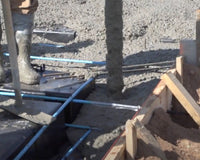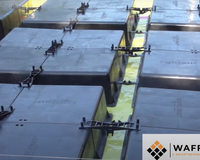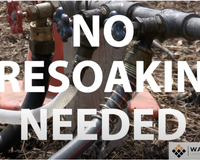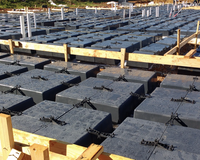You may have seen or noticed cracks in the base or foundation of buildings where one corner of the structure seems to be sinking into the ground. This happens during foundation shifting and is known as differential movement. You may also have seen where the floors or doorways in a structure appear to be tilted. This is also caused by differential movement. When the tectonic plates in the earth’s crust begin to shift, it is enough to easily move a home. The seismic waves may not be strong enough to be considered an earthquake, but it can easily pull a basement wall away from a foundation, and even move a house.
Water may seem like an afterthought, but it is a known fact water can cause foundation problems. To many its a revelation to see that a house can settle after 20 years, and it causes many to speculate on what causes the ground to move. Shifting soil pulling away from a foundation causes more home damage than storms and floods combined. Knowing the types of foundation movement and the causes of foundation movement will go a long way in ensuring you build the longest lasting structure possible.
Where the movement occurs, on the edge or in the center greatly affects where the damage will appear on the structure and what it will look like. Lets take a deeper look into differential movement and foundation settlement and its causes.

Interior
When you see doors become misaligned or not fit squarely, spaces or separation in molding or cabinets and sloping or unlevel floors, these are signs that the foundation is damaged or moving. Interior problems arise when there is a lift in the center of the foundation from a swell of expansive soils.
Exterior
When you see cracks in the brick and mortar or gaps in siding, doors, garage etc. that is a sign that one of the edges of your foundation is experiencing lift or sinking. To repair experts these are known as foundation settling cracks.
Causes
Building on clay soil or loose soil can create soft patches where your foundation may sink in that area. Being in a climate where there are variations in temperature or rainfall can also be a ground settlement cause. As the water expands during freezing, it pushes your foundation upward causing lift. Knowing what kind of soil you are building on and your foundation options are keys to preventing this from happening to your project.
Vertical Movement

When your foundation moves vertically, you will see more exterior damage in the foundation and brick as one area rises and falls while the rest of the foundation stays in place. When vertical cracks are fairly uniform, it is usually caused when a non sloping section of foundation meets a part that is moving or by shrinkage in the concrete itself. Sometimes when of of the sides begins to sink a process known as ‘mud jacking’ or pumping a concrete slurry under the footings, is done to att
Horizontal Movement
When your foundation moves horizontally, normally you see more interior damage from bulging or leaning walls. As the soil below it shifts from side to side, it takes foundation and structural walls with it creating gaps and leaning.
Foundation
What type of foundation you use can affect how if your build is impacted by lift. Mat slab foundations are one application that allows to compensate for lift and can provide some measures of prevention. You must consult your contractor to get more information, but be sure to explore your foundation options. A waffle mat foundation is the best preventative measure for lift, because it allows the ground to expand and contract without damaging the structure of the foundation.
What are expansive soils
Ground that has a high concentration of sand or clay can become expansive by holding water as it freezes and expands, and then releasing it as it thaws. Being able to identify these types of soil is not enough, you must know how to build on them while mitigating the affects of the expansion. Wafflemat foundation design is the leading technology in building on expansive soils. Wafflemat foundations with a void design allow moisture to escape and not expand and contract under your foundation. Eliminating the soil movement keeps the foundation fixed and stable, preventing cracking, sloping and gaps.
To learn more about the best technology today for building on soft soil, contact a Wafflemat representative today.





